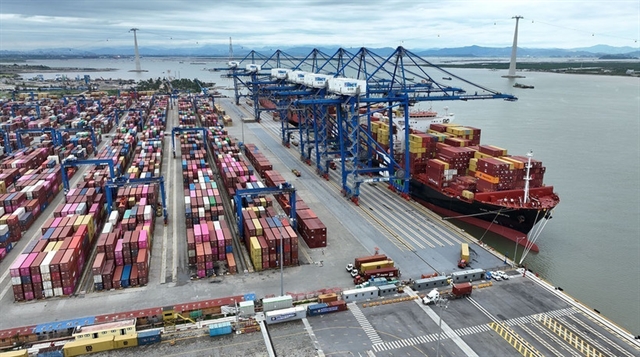 Opinion
Opinion

Trần Văn Lâm, a member of the National Assembly Committee for Financial and Budgetary Affairs, talks to Vietnam News Agency about the need to comply with financial discipline when making medium-term plan for public investment.

|
| Trần Văn Lâm, member of the National Assembly Committee for Financial and Budgetary Affairs. |
Trần Văn Lâm, a member of the National Assembly Committee for Financial and Budgetary Affairs, talks to Vietnam News Agency about the need to comply with financial discipline when making medium-term plan for public investment.
Public investment has always been the concern of the Government, ministries and localities. This term is also the first time the National Assembly has issued a Resolution on a five-year medium-term plan for public investment in accordance with the Law on Public Investment. How do you evaluate this resolution?
The consent on a definition of public investment capital will help overcome one of the biggest problems, which is the confusion when determining the nature of sources of public investment, leading to more difficulties in transferring these funds.
In addition, the revision of the concept of public investment capital such as the 2019 Law on Public Investment will positively impact the classification of projects and the classification of investment plans, which helps simplify the continuity of related procedures.
This creates a clear distinction between capital sources, avoids overlaps and inconsistencies in the understanding of public investment capital, as well as a positive impact on disbursement rates during the year among units.
Thanks to that, we have a basis to build budget estimates as well as medium-term investment plans. This is a very true and timely document.
Can you evaluate the planning and use of medium-term investment capital, especially when the Law on Public Investment was passed by the 14th National Assembly?
An economy has plans, strategies, visions of 20 to 30 years and socio-economic development plans of five to 10 years. Of all those plans and strategies, the key factor is financial resources. Along with financial resources is investment in basic construction. Therefore, all investment plans and strategies should be built according to the medium-term plan milestone, at least with the vision of five years, so that they can be incorporated into the implementation of the general socio-economic development plan.
Developing a medium term financial plan is a practical need. It is necessary to ensure the arrangement of financial resources for such a long period. With such assured financial resources, the Government can allocate capital harmoniously and reasonably and avoid overspending, increasing public debts.
The benefits are clear, but the implementation process is not easy due to two factors. Objectively, we cannot calculate all the factors affecting the socio-economic situation and the financial situation, budget revenue and expenditure in the next two or three years, let alone 10 years. Therefore, the construction of medium-term plans is sometimes not close to reality.
Our laws stipulate that if a project is to be included in the annual plan, it must be included in the medium-term plan. If not, the plan should be added into the medium-term before it can be added to the annual plan.
However, the process of adding a project into medium-term plans takes a lot of time and procedures.
As soon as there are unexpected revenue sources and such sources can be spent for urgent projects, but those projects are not listed in the estimate, there's no mechanism for related units to allocate such sources.
The second factor is subjective because of the mind set. Every new leader wants to make their mark. So even if the long-term plans are already completed, some leaders still want to make some adjustment in an attempt to create (what they think are) breakthroughs.
What should be the focus during the implementation of fiscal discipline in the future?
Fiscal discipline is a set of rules and regulations for drafting, approving, and implementing the state budget. In other words, fiscal discipline is the limits of the standardised fiscal indicators in the law, including the levels of revenues, public expenditures, budget balances and public debt in place. Compliance with these targets means ensuring fiscal discipline.
The requirement for the future is that the planner and estimate maker must have a strategic vision, long-term, reasonable divergence to have a roadmap and steps suitable to the capacity. The vision of the long-term planning and strategy planner is very important; At the same time, it is necessary to put in place financial discipline.
Currently, many localities are strict when making budget estimates. But at the end of the year, when the budget revenue exceeds the estimate, they want to immediately allocate the capital. This is the will of local leaders. However, this is not consistent with the medium and long term plan, it only meets the wishes of the leaders at that time.
Therefore, financial discipline needs special supervision and plans. Authorities need to make a list of projects that are prioritised and develop a specific roadmap for the implementation of such projects.
Also, there needs to be a certain rate of contingency so capital can be mobilised in cases of natural disasters, diseases or other factors. — VNS




